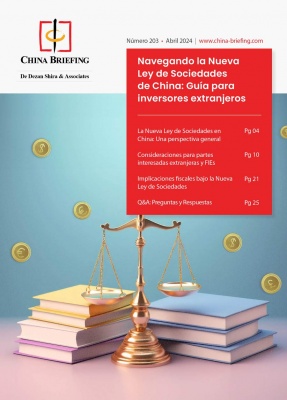Key Points from the 4th U.S.-China Strategic and Economic Dialogue
By Xiaolei Gu
May 8 – The Fourth Round of the U.S.-China Strategic and Economic Dialogue (hereinafter referred as “Dialogue”) was held in Beijing on May 3-4, during which the two sides exchanged views on bilateral, regional, and global issues.
Below is a brief summary of the key points to come out of the fourth round of the Dialogue, according to a news release posted on the Chinese government’s official web site.
Strengthening U.S.-China macroeconomic cooperation
In the medium term, the United States will be dedicated to transforming the pattern of economic growth, increasing the level of investment and exports, and raising its aggregate savings rate back to the average levels seen between 1980 and 2010. Moreover, the United States promises to make efforts to cut its deficit in order to reduce the proportion of debt in the economy.
Meanwhile, China will be devoted to reforming its development pattern, improving the livelihood of its citizens, and actively seeking to expand domestic demand. In order to achieve these goals, efforts will be made to lower import taxes on commodity goods, accelerate its VAT reform, and improve the collection system of state-owned capital gains.
The two countries will also implement G20 agreements aimed at advancing a foreign exchange regime determined by the market and avoiding an imbalanced exchange rate. The People’s Bank of China will continue utilizing various monetary policies to achieve sustainable economic growth and a stable price. In the meantime, the Fed promises to stabilize the price of the U.S. dollar and to maximize employment.
China and the United States promise to stay active in exchanging opinions on the development of the European market, as well as on how to support the recovery of the Eurozone. Furthermore, the two countries acknowledge the importance of the IMF in global economic development and agree to extend their support.
Promoting further opening-up and investment
The United States will take into consideration China’s request for fair treatment in reforming the export control system. Moreover, the United States promises to accept and review China’s request to purchase high technology for civilian use. The United States also promises CFIUS’s fair treatment of investors from all over the world and welcomes foreign investment by continuing improvements in the country’s infrastructure.
With regards to foreign trade and investment, China is dedicated to strengthening its supervision and enforcement of intellectual property rights. Furthermore, China promises fair treatment to all foreign investment in China regardless of the country of origin.
Promoting global standards and global economic governance
Both China and the United States recognize the importance of formulating internationally-accepted rules across global financial markets and promoting global economic governance. As a result, China and the United State will team up to establish credible international guidelines for exports that cater to the interests and specific situations of different countries under the “Joint Fact Sheet on Strengthening U.S.-China Economic Relations” released in February 2012. An agreement is expected to be reached in 2014.
In order to better promote a global standard and further the global economic government, the two countries also agree to:
- Strengthen information exchange under TPP and the China-ASEAN Free Trade Agreement
- Boost communication and exchange of ideas on bilateral trade statistical methods between the two countries
- Acknowledge that the currencies with Special Drawing Right (SDR) should follow the existing standard. Therefore, the United States supports Chinese RMB to be granted SDR when meeting the standards of IMF
- Support the comprehensive regulating and decision-making system the IMF is promoting
Promoting a stable financial market and its reform
China and the United States endeavor to construct a healthy global financial system that aims at supporting the real economy and implementing the framework of supervision agreed upon in the G20 summit. Both sides will keep working on a better supervision regime for important financial institutions, a functioning risk treatment mechanism, an efficient treatment system for financial companies, and a management system for financial derivatives. The two countries promise to further the reform of the salary system of financial institutions and support the establishment of a unified high-quality accounting standard on a global scale.
The United States welcomes foreign investment in the financial sector and promises fair treatment for the applications of Chinese-funded banks, security companies and funds to enter the U.S. market.
China promises to allow foreign automobile financial services companies and financial leasing companies to issue bonds in China. The country has also carried out a pilot scheme to equal treatment of foreign and domestic financial institutions in the field of credit asset. Moreover, the Chinese government will revise related regulations to allow foreign investors to hold no more than 49 percent of shares in a joint-venture security company. Joint-venture security companies can serve as stock (including stocks in RMB and foreign currencies) and bonds (including government and corporate bonds) sponsors and underwriters. Joint-venture security companies will be allowed to expand the scope of business after two years of business if they meet related standards. The Chinese parties promise that foreign investors can hold up to a 49 percent share in a futures brokerage company. Lastly, the Chinese government will lift the quota of QFII to $80 million.
China and the United States will implement the agreements and keep the promises in the Fourth Round of the U.S.-China Strategic and Economic Dialogue.
Detailed outcomes from the U.S. Department of State regarding the Strategic Track can be found here.
Related Reading
China-U.S. to Boost Accounting Communication and Cooperation
Subpart F: Limitations to the Deferral of U.S. Taxation for FIEs
- Previous Article Setting Up and Operating a Company in Hong Kong
- Next Article China RO vs. FICE
























